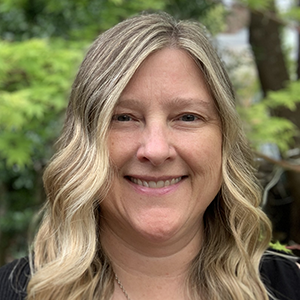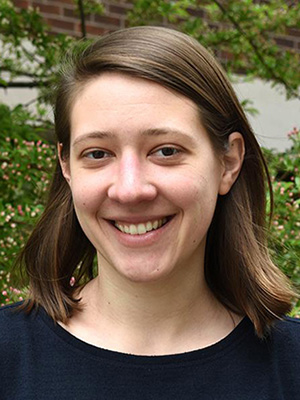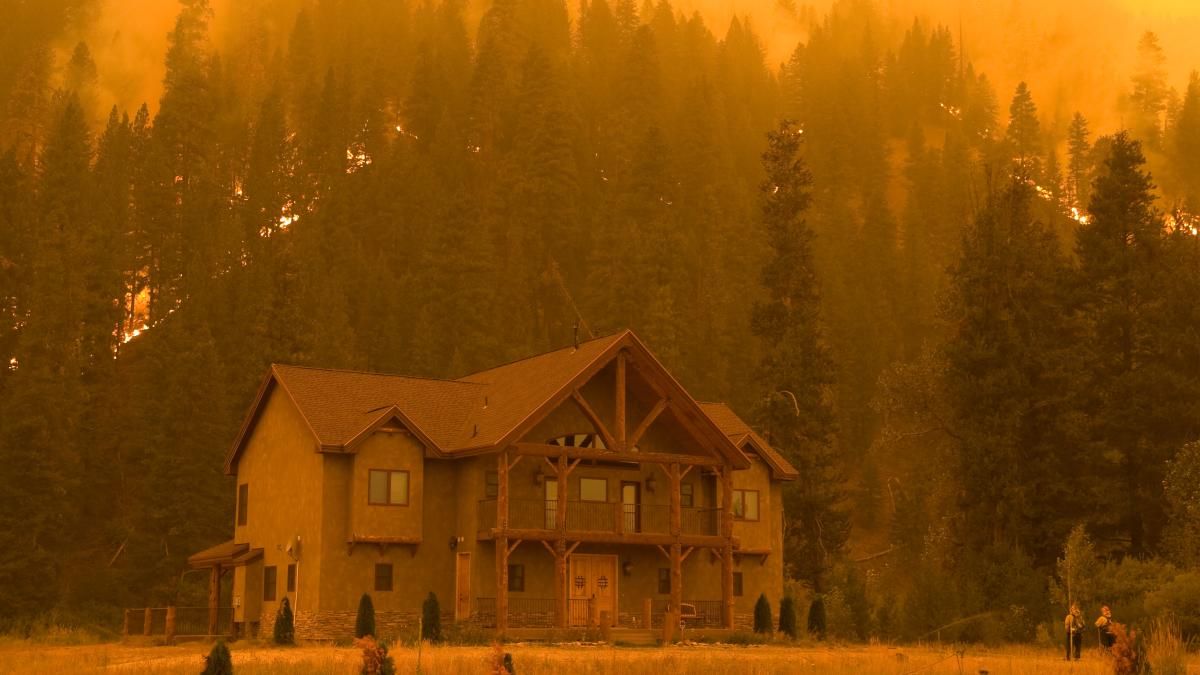Breathing wildfire smoke poses a health risk to people of all ages, not just young children and older adults, according to new research from the UW Department of Environmental & Occupational Health Sciences (DEOHS) and colleagues at Seattle Children’s.

Two new research papers published recently in Environmental Research: Health found an increased risk of hospital service encounters in the Pacific Northwest in the days following wildfire smoke events.
The researchers found that the risk of respiratory-related emergency department encounters increased most sharply for those between the ages of 19 and 64. The findings suggest that public health messaging should also target younger and middle-aged adults, who may not see themselves as vulnerable to wildfire smoke.
“We do have this younger age group in there who may think they’re invincible, or that the risk messaging doesn’t apply to them because they’re not very young or elderly,” said DEOHS Teaching Professor Tania Busch Isaksen, co-author of both papers.
Isaksen is also co-director of the Collaborative on Extreme Event Resilience, which has produced a string of papers on the health risks of wildfire smoke.
“Knowing that essentially all age groups are at risk of negative health outcomes during wildfire smoke events is an important finding and a shift in how we think of who is vulnerable in our population during these events,” Busch Isaksen said.
“I expect these results will be informative to public health risk communication strategies aimed at reducing wildfire smoke exposure in all age groups through behavior change such as limiting time outdoors, actively cleaning your indoor air, etc.“
Odds of ED visits rise with increased smoke
The first study, led by DEOHS alumna Annie Doubleday and published May 25, analyzed emergency department (ED) data from hospitals across Washington state.

It found an increased risk of respiratory-related ED visits, including visits for asthma, in the five days following a smoke event. Researchers also observed a delayed increase in the odds of cardiovascular-related ED visits.
The analysis also found a correlation between the amount of smoke in the air and the risk of ED encounters. For every 10 µgm−3 increase in the concentration of fine particle pollution — PM 2.5 or particulate matter 2.5 micrometers or smaller — the odds of ED visits rose accordingly.
“For me the takeaway is we’re all at risk of health impacts,” said Doubleday. “Obviously some more than others, such as those with pre-existing respiratory or cardiovascular conditions, but we all should be taking steps to reduce exposure and watching for any symptoms.”
Doubleday completed the research while working toward her doctorate in environmental health. She now works on air quality for the Washington State Department of Health.
Symptoms may lag in children
The second study, led by recent DEOHS graduate Daaniya Iyaz, is among the first to document the health effects of wildfire smoke on children in Washington state.
Published June 15, it analyzed 15 years of data from Seattle Children’s ED and in-patient hospital admissions, comparing rates of visits on days with and without smoke.
.jpg)
Researchers linked wildfire smoke events to a 7% increase in the odds of all-cause hospital admissions. Notably, the odds of hospitalization remained elevated in the week after smoke events, highlighting the need to monitor children’s symptoms well after exposure.
“We definitely want to be more cognizant of exposure when it comes to children during wildfire smoke season,” said Iyaz, who earned an MS in Environmental Health and now works in extreme heat mitigation for King County.
“After children are exposed to wildfire smoke, keep monitoring symptoms for a couple of days, because they can lag, especially if there are underlying health conditions that might contribute.”
The study did not find any change in visits to the ED, which researchers attributed to the unique population served by Seattle Children’s. As a Level I trauma center, the hospital draws medically complicated cases from across the region, so its patients may be at greater risk of hospitalization than the general population.
Parents may also be more likely to bring a sick child to the nearest emergency room, where their visit wouldn’t be captured by this specific dataset.
Educating parents on wildfire smoke risks
Even before the papers were published, the findings began to show real-world impacts on public health. Iyaz designed an easy-to-read summary of how smoke can affect children’s health, so patients’ families can better prepare for future events.
"Wildfire smoke days are relatively new, and not all people may understand them,” Iyaz said. “If people aren’t aware of what wildfire smoke is and the impacts it can have, that makes it more important to meet communities where they are and talk about what the health effects can be.”
Others involved in the research include: DEOHS Professor Lianne Sheppard, DEOHS Assistant Professors Elena Austin and Coralynn Sack, and Alexandra Perkins and Jonathan Cogen from the Division of Pulmonary and Sleep Medicine, Department of Pediatrics, Seattle Children’s.




